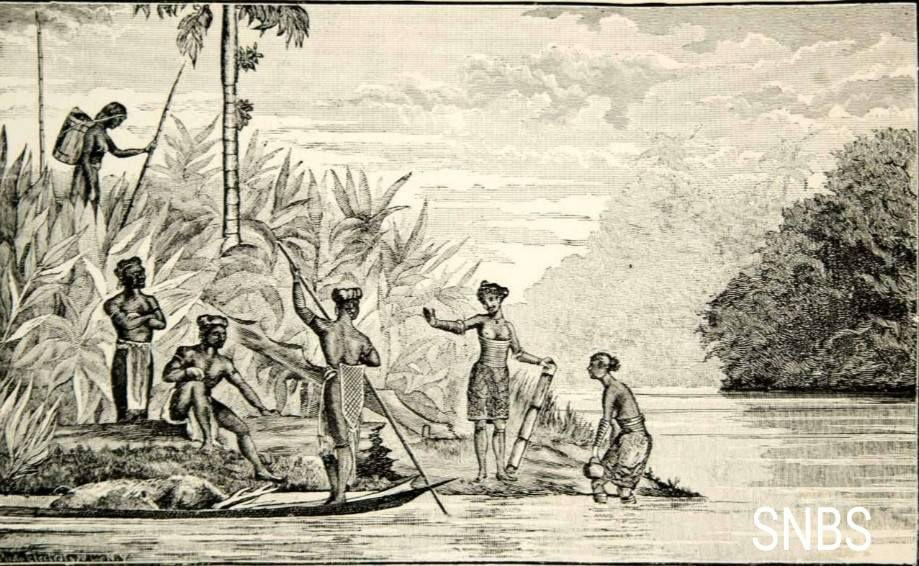EARLY HISTORY OF PENAMPANG - THE BUIS KULINTANGON REBELLION
- Marwan Bin Musa
- Feb 26
- 4 min read

This is a story of the rebellion of the Kadazan people of Penampang against the tax collectors of the Brunei Sultanate. Kulintangon was a small hill about 300 feet above sea level, located behind the town of Donggongon, Penampang. In the past, this area was surrounded by swamps. The Kadazan people chose Kulintangon Hill as their stronghold due to its excellent vantage point and strategic location.
For the Kadazan people, the word "Buis" was foreign to them. However, they referred to Buis as a head tax or poll tax collected annually by the representatives of the Sultan of Brunei. The Kadazan people gave the title "Tabai Moguak" to the tax collectors, meaning "Bruneian who likes to ransack."
Thus, whenever a Bruneian appeared, they would whisper among themselves, saying that "Tabai Moguak" had arrived. Rebellion was not something the Kadazan people took lightly. Known for their prowess in "Minsangod," which means headhunting, the Kadazan people were actually peace-loving and extremely loyal to their rulers.
This rebellion occurred due to a misunderstanding, as the Kadazan people primarily blamed the tax collectors rather than the Sultan of Brunei. This account is an oral history passed down through generations about the origins of the Buis Kulintangon Rebellion.
We all know that in ancient times, the Sultan of Brunei was the ruler of Borneo. The Sultan of Brunei was an esteemed and respected figure in Borneo at that time. However, during that period, pirate activities were rampant and difficult to control. In the 18th century, pirates frequently landed along the coast. They came and went as they pleased, capturing young boys and girls to be sold elsewhere.
The Sultan of Brunei faced difficulties in curbing these incidents and managing his vast population across the Borneo archipelago. During that time, the Sultan of Brunei ordered that every man over the age of 20 must pay a head tax. Each year, the Sultan would send his representatives to collect this tax. The tax collectors would sail in from the Putatan River up to Penampang.
At that time, the town of Penampang was inhabited by many Kadazan people. There were numerous Kadazan houses from various villages in Penampang. The head tax collected was usually just a few gantangs of rice and a few chickens per household.
"Buis" was something simple and manageable for the villagers. However, the tax collectors were generally disliked by the people. The Kadazan people understood that not paying taxes was not an option. They were aware that they had to pay taxes. However, they were divided into different factions without a leader or a figure of authority who was truly respected, powerful, and recognized by the Sultan.
Typically, "Buis" was collected once a year. The Kadazan people were content and had no reason to complain. However, suddenly, the "Tabais" (Bruneians) began coming more frequently, up to four times a year. Every time they came, they took belongings from the villagers. The villagers started feeling burdened and oppressed by the actions of these tax collectors. Initially, the Kadazan people did nothing. They thought they could appeal to the Sultan, but who among them could bring their grievances to the Sultan and ensure their voices were heard?
When the tax collectors arrived, they used the Sultan's name to take whatever they wanted, as if they had the Sultan's blessing to oppress the people. The Kadazan people did not understand the Sultan's administrative system or how a government functioned. All they knew was that the "Tabais" (Bruneians) were oppressing and seizing their belongings. Soon, the Kadazan people gathered their courage and resolved to stop the "Tabais" (Bruneians) from taking their possessions any longer.
The first battle occurred in Kampung Terawi. The Kadazan people cut down a large tree and placed it across the river leading to Penampang. The "Tabais" (Bruneians) could no longer sail further into Penampang. The location where the tree was felled became known as Tagad. For the first time, the "Tabais" (Bruneians) were defeated in the Battle of Terawi. Their defeat angered them, and they returned a few weeks later with a larger force and better weapons.
The villagers, however, did not remain idle. They knew in advance that the "Tabais" (Bruneians) would return seeking revenge and had already prepared. The villagers hid all the women and children in several safe houses protected by skilled warriors. The brave Kadazan warriors, known as "Pangazou," were already stationed in their fortress at the peak of Kulintangon Hill.
The warriors, led by "Huguan Siou," had prepared many large logs and coconut trunks as secret weapons. With a strategic plan, the elite Kadazan warriors lured the "Tabais" (Bruneians) up the hill. At the right moment, the warriors in the fortress rolled the logs down the hill towards the "Tabais" (Bruneians). Then, over 100 courageous Kadazan warriors launched an attack, killing all 50 "Tabais" (Bruneians) and beheading them.
News of this tragic event reached the Sultan. The Sultan was a wise ruler and understood the real situation. He did not act hastily with anger or pass immediate judgment. Instead, he convened his advisory council to seek a reasonable solution.
The advisors suggested that the Sultan send capable envoys to select a leader among the Kadazan people—someone who could govern and administer them on behalf of the Sultan. After this event, no more rebellions occurred in Penampang until the British era.
Edited and compiled by: Kumis Kumis
Image: From Google Source: The Society Journal Vol. 3, from the original records of Native Chief Tan Ping Hing.







Comments